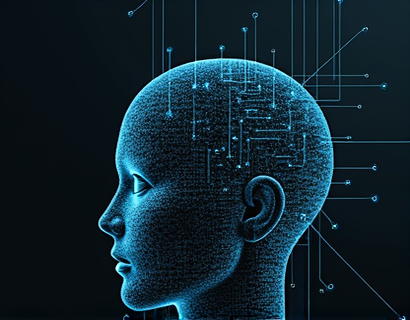Transforming Healthcare Communication: The Power of AI-Driven Chat Interfaces in Intensive Care Units
The integration of artificial intelligence in healthcare, particularly within Intensive Care Units (ICUs), marks a significant advancement in patient care and operational efficiency. An AI-driven chat interface emerges as a pivotal tool, offering real-time insights and enhancing communication among patients, caregivers, and healthcare professionals. This technology ensures that all parties involved have access to timely and accurate information, thereby facilitating informed decision-making and improving outcomes in critical care settings.
Enhancing Access to Critical Information
The primary function of an AI-driven chat interface in an ICU setting is to provide instant access to a wealth of information. This includes detailed protocols, patient data, treatment options, and industry standards. For healthcare professionals, this means having at their fingertips the latest research findings, clinical guidelines, and best practices, all updated in real-time. This immediate access to comprehensive data empowers doctors and nurses to make quick, informed decisions, which is crucial in the fast-paced environment of an ICU.
Improving Patient and Caregiver Communication
For patients and their caregivers, the AI chat interface serves as a vital communication tool. It demystifies the complexities of ICU services and treatments by providing clear, concise information. Patients can ask questions about their condition, treatment plans, and expected outcomes, receiving answers that are both accurate and easy to understand. This transparency fosters trust and collaboration between patients and their healthcare teams, leading to better adherence to treatment plans and improved patient satisfaction.
Real-Time Insights for Better Decision-Making
The real-time nature of AI-driven chat interfaces is one of their most significant advantages. Healthcare professionals can receive up-to-the-minute updates on patient statuses, lab results, and equipment availability. This immediacy is invaluable in an ICU, where every second counts. For instance, a nurse can quickly check the chat interface for the latest blood pressure readings or medication schedules without needing to consult multiple sources or wait for manual updates. This streamlined access to information enhances the speed and accuracy of care delivery.
Interdisciplinary Collaboration
The AI chat interface also facilitates better collaboration among the multidisciplinary team in an ICU. Doctors, nurses, pharmacists, and other specialists can use the platform to share insights, discuss treatment options, and coordinate care plans. This seamless communication ensures that all team members are on the same page, reducing the risk of errors and improving patient outcomes. The platform can even integrate with existing hospital information systems, allowing for a more cohesive and efficient workflow.
Enhancing Educational Resources for Healthcare Professionals
For healthcare professionals, the chat interface serves as an ongoing educational resource. It can provide access to continuous medical education, including the latest research articles, clinical trial updates, and training modules. This ensures that staff remain up-to-date with the evolving standards of care and emerging treatments. For new staff members, the chat interface can offer a comprehensive onboarding experience, guiding them through ICU protocols and procedures.
Customizable User Experiences
The AI-driven chat interface can be tailored to meet the specific needs of different users. For example, a nurse might prioritize alerts for medication administration times and patient vitals, while a doctor might focus on diagnostic results and treatment recommendations. This customization ensures that each user receives the most relevant information, enhancing the overall utility of the platform.
Ensuring Data Security and Privacy
In the realm of healthcare, data security and patient privacy are paramount. The AI chat interface is designed with robust security measures to protect sensitive information. Encryption protocols, secure authentication methods, and compliance with regulations such as HIPAA ensure that patient data remains confidential and secure. This trust in the platform's security encourages widespread adoption and use among healthcare professionals and patients alike.
Integration with Wearable Devices and IoT
The integration of AI-driven chat interfaces with wearable devices and Internet of Things (IoT) technologies further enhances their capabilities. Real-time data from wearables, such as heart rate monitors and blood glucose levels, can be seamlessly incorporated into the chat interface. This integration allows for continuous monitoring and immediate alerts in case of anomalies, enabling proactive interventions and better patient outcomes.
Supporting Family and Caregivers
Family members and caregivers play a crucial role in the recovery process of ICU patients. The AI chat interface provides them with a dedicated channel to receive updates, ask questions, and express concerns. This support system helps alleviate the emotional and informational burden on caregivers, ensuring they are well-informed and supported throughout the patient's hospital stay. The platform can also offer resources and guidance on how to best support their loved ones during this challenging time.
Enhancing Operational Efficiency
Beyond patient care, the AI chat interface contributes to the overall operational efficiency of the ICU. Administrative staff can use the platform to manage schedules, track inventory, and coordinate logistics. Automated reminders for tasks such as medication administration and equipment checks reduce the likelihood of human error and ensure that all procedures are followed consistently. This streamlined management helps reduce the workload on healthcare professionals, allowing them to focus more on patient care.
Future Prospects and Innovations
The potential for AI-driven chat interfaces in healthcare is vast, with ongoing advancements promising even greater benefits. Future iterations may include more sophisticated natural language processing, enabling more nuanced and context-aware interactions. The integration of machine learning algorithms could allow the platform to learn from user interactions, continuously improving the relevance and accuracy of the information provided. Additionally, the development of multilingual capabilities will make these tools accessible to a broader range of patients and healthcare professionals.
Conclusion
The AI-driven chat interface represents a transformative step in healthcare technology, particularly within the critical environment of ICUs. By providing real-time insights, enhancing communication, and ensuring data security, these platforms empower healthcare professionals, patients, and caregivers to make informed decisions and deliver superior care. As the technology continues to evolve, its role in shaping the future of healthcare will only become more significant.










































